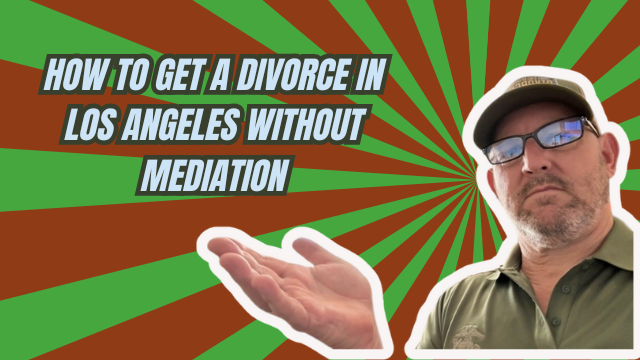How to Avoid Delays in a Los Angeles County Divorce
Hi, I’m Tim Blankenship of Divorce661. In my video I walk through the most common causes of unnecessary delays in Los Angeles County divorces—and how to prevent them. If you’re filing for divorce in L.A. County, knowing what the court expects will save you time, frustration, and avoidable rejections.
Why delays happen (and why they’re avoidable)
Most divorce delays come down to paperwork and procedure. The Los Angeles Superior Court is strict about electronic filing, form versions, service rules, financial disclosures, and the judgment package. A single missing form or incorrect attachment can trigger a rejection and add weeks or months to your timeline. Below are the four most frequent causes of delay and practical steps to prevent them.
1. Errors in filing
Los Angeles County requires electronic filing for divorce documents and enforces strict formatting and form-version rules. Common filing errors include:
- Using outdated or incorrect form versions
- Missing required attachments or exhibits
- Incorrectly filled fields or formatting that the e-file system rejects
How to avoid it:
- Confirm you’re using the latest court-approved forms before you file.
- Follow the e-filing checklist from the court or your filing service.
- Have someone experienced review your packet before submission.
2. Improper service of your spouse
Service is not just a formality—it’s what officially starts the mandatory six-month waiting period under California law. If service is done incorrectly, the clock never starts and your case can’t move forward.
Key points:
- Make sure service is completed according to California Rules of Court.
- File the correct Proof of Service form promptly and accurately.
- If you use a professional process server or mail service, keep clear records and include the declaration of service with your filings.
3. Incomplete financial disclosures
Before a judgment can be submitted, both parties must exchange full financial disclosures. The court expects:
- Complete Income and Expense Declarations
- Preliminary or final Disclosures, where applicable
- Declaration Regarding Service of Disclosure (to prove disclosures were served)
If disclosures are missing or the declaration of service isn’t filed, the court will not process a judgment and will issue a rejection notice.
4. Judgment package rejections
Many cases reach the final step only to be rejected because the judgment package has missing forms, incorrect attachments, or agreements that don’t comply with California law. Common pitfalls include:
- Hand-written or informal agreements that lack required legal language
- Missing signatures, dates, or required notary or verification statements
- Attachments in the wrong order or omitted entirely
How to avoid it:
- Use court-approved form templates for judgments and orders.
- Ensure all exhibits and attachments are labeled and included.
- Have the completed judgment reviewed for compliance before e-filing.
A simple checklist to keep your case moving
- Confirm and use the latest court forms.
- E-file correctly—follow the county’s e-filing requirements.
- Serve your spouse properly and file the Proof of Service without delay.
- Exchange and file all required financial disclosures; include the declaration of service.
- Assemble the judgment package with all required forms, signatures, and attachments.
- Double-check that legal language and formats meet California requirements.
Real client example
We recently worked with a couple who had attempted to file on their own. After multiple rejections and six months of frustration, they contacted us. We reviewed and corrected their paperwork, re-submitted the judgment electronically, and had it approved in less than two weeks.
Their only regret: not calling us sooner.
This is a good example of how small errors can compound into long delays—and how the right review and filing can resolve those problems quickly.
How Divorce661 helps you avoid delays
At Divorce661 we specialize in preventing the most common causes of rejections and delays in Los Angeles County. Our services cover every step and are designed to ensure nothing is missed:
- Flat-fee divorce services—no hourly surprises
- 100% remote assistance for all of L.A. County
- E-filing, service of process, financial disclosures, and judgment preparation
- Fast, accurate, court-approved submissions
Next steps
If you want to avoid unnecessary delays and get your divorce done right the first time, schedule a free consultation at Divorce661. We’ll guide you through the process, handle the paperwork, and help you avoid the common pitfalls that stall cases.
Visit: divorce661.com to schedule your free consultation and learn more about our flat-fee, remote divorce services.
Final thought
Most delays in Los Angeles County divorces are avoidable with the right paperwork and process. Be proactive: use current forms, serve correctly, exchange full financial disclosures, and get expert review before you submit your judgment package. Taking these steps will save you time, reduce stress, and keep your case moving forward.










